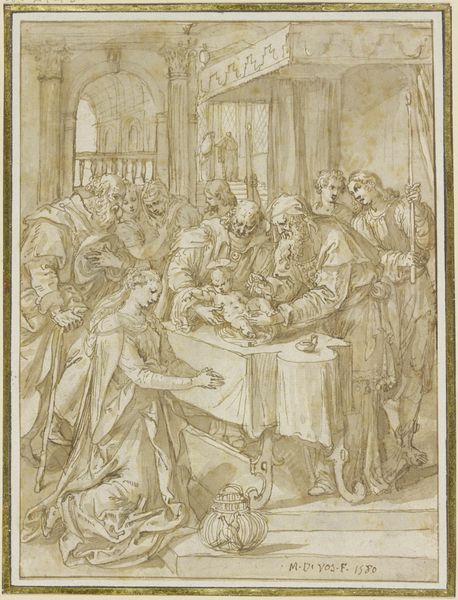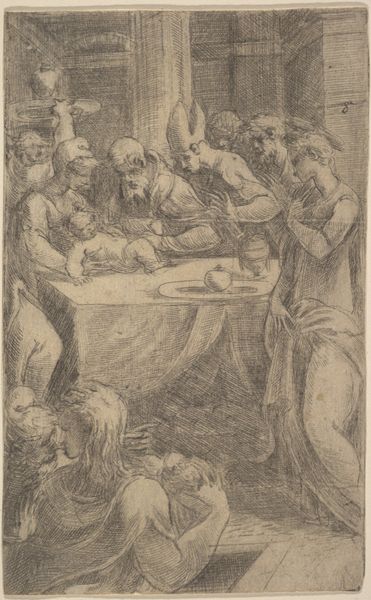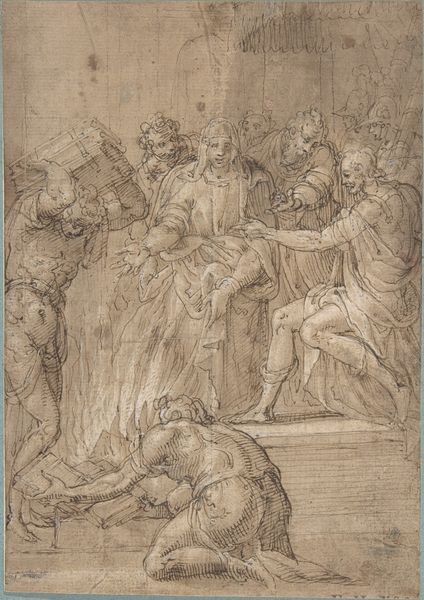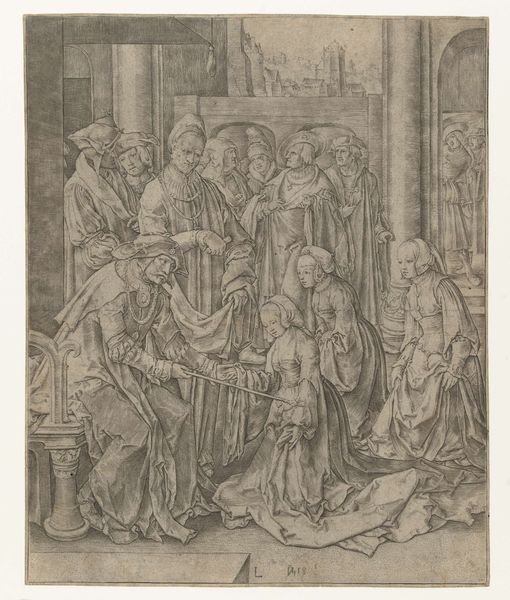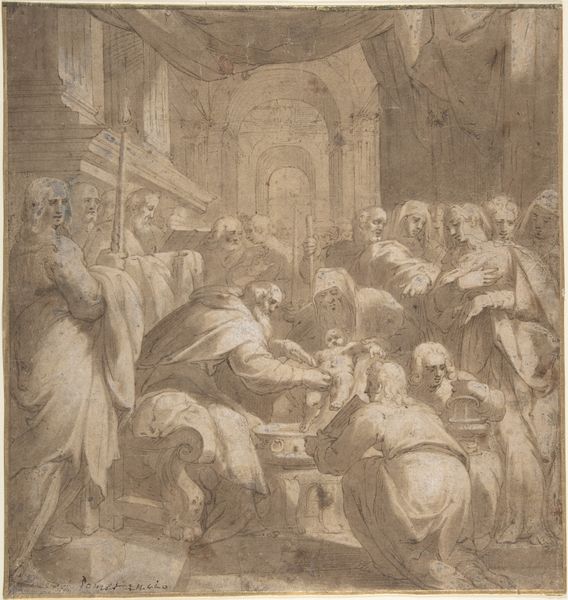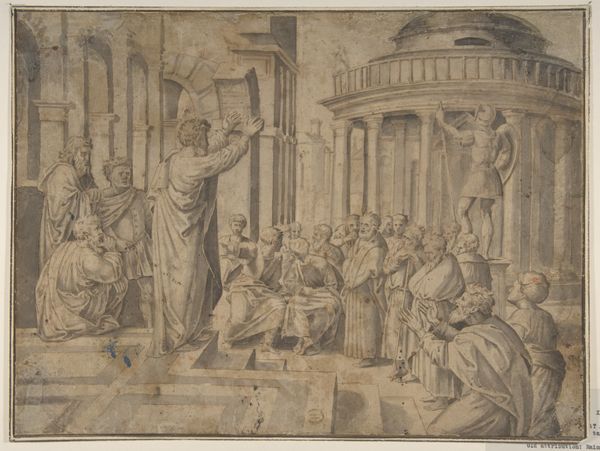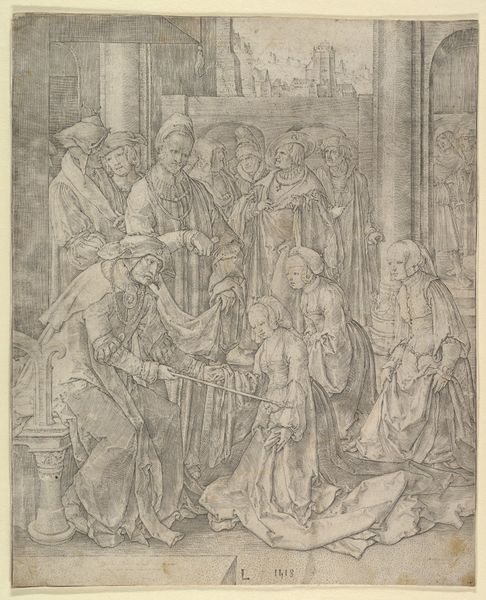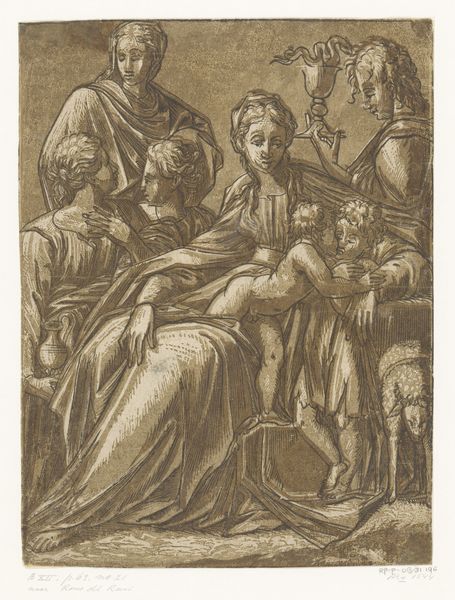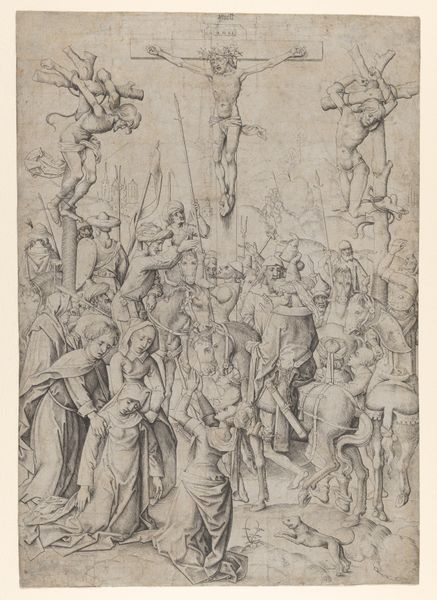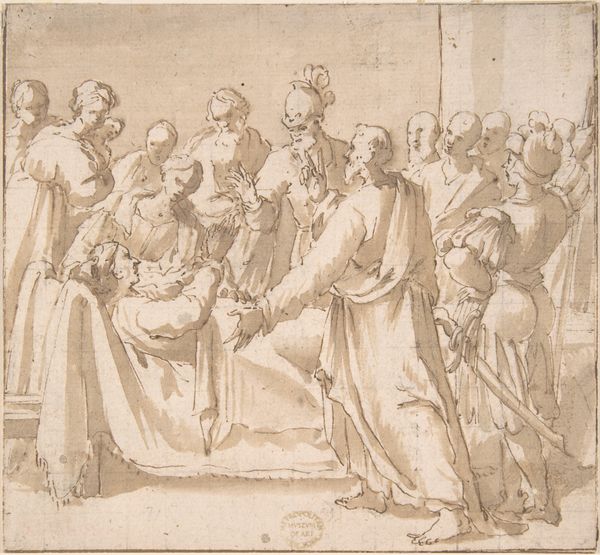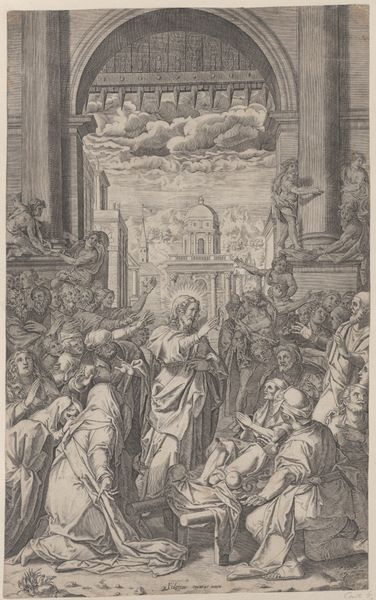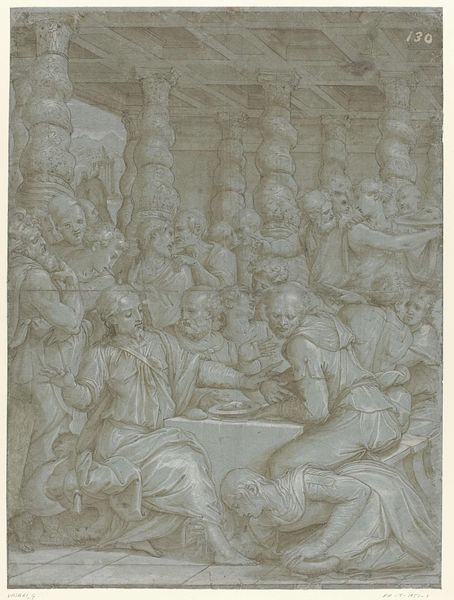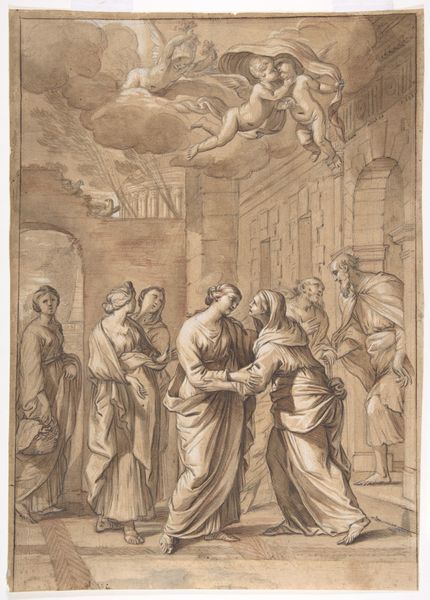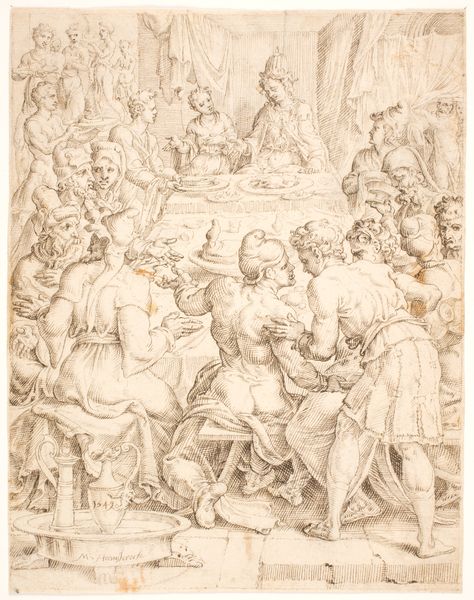
drawing, ink
#
drawing
#
figuration
#
11_renaissance
#
ink
#
history-painting
#
italian-renaissance
Dimensions: 294 mm (height) x 213 mm (width) (bladmaal)
Curator: This is Camillo Boccaccino’s "Omskærelsen", an ink drawing created sometime between 1504 and 1546, part of the collection at the SMK, Statens Museum for Kunst. Editor: My first thought? It's a performance. A densely packed gathering, but there's a powerful tenderness in the focus on this tiny figure being lifted onto what looks like an altar. It has a solemn and heavy atmosphere. Curator: Indeed. As a history painting, the work demonstrates Boccaccino's involvement with Italian Renaissance ideals of representation, and more specifically his relationship to broader patterns of imagery around religious subjects in circulation in Venice and beyond. Notice the careful figuration in the posture of the assembled observers and of the priest figure to the right, all demonstrating Boccaccino’s engagement with linear perspective. Editor: I agree about the Italian Renaissance influence. But thinking about those religious subjects you mention, it strikes me as deeply rooted in questions of power, especially within institutionalized religion. Consider how this ritual is staged before what looks to be an elite crowd of witnesses. What meaning is inscribed upon this young, vulnerable body? Whose gaze truly matters here, in dictating the future identity of the child? Curator: From my perspective, these elements support the image's clear alignment with religious authority during the Italian Renaissance, and its visual participation in those systems of power, yes. Boccaccino uses these religious themes in accordance with existing power structures, and it reproduces a sense of officialdom. The composition and the careful rendering underscore its significance to its original, most likely religious, patron. Editor: I think by considering what we see on display—patriarchal power, vulnerability—we have to confront how this narrative excludes the individual child in order to reinforce this particular staging of tradition. But if we start by considering what Boccaccino chooses to put in the shadows or erase altogether, what conversations are possible around this depiction, specifically about marginalization in a very controlled historical context? Curator: Those are definitely important questions to continue thinking through. The complex interplay between religious subjects and power continue to make the study of works like Boccaccino's so intriguing, especially how they represent and were integrated into period social dynamics. Editor: Exactly! And engaging in this ongoing conversation brings it all home for me—recognizing historical perspectives but actively using that knowledge to challenge these portrayals today.
Comments
No comments
Be the first to comment and join the conversation on the ultimate creative platform.
